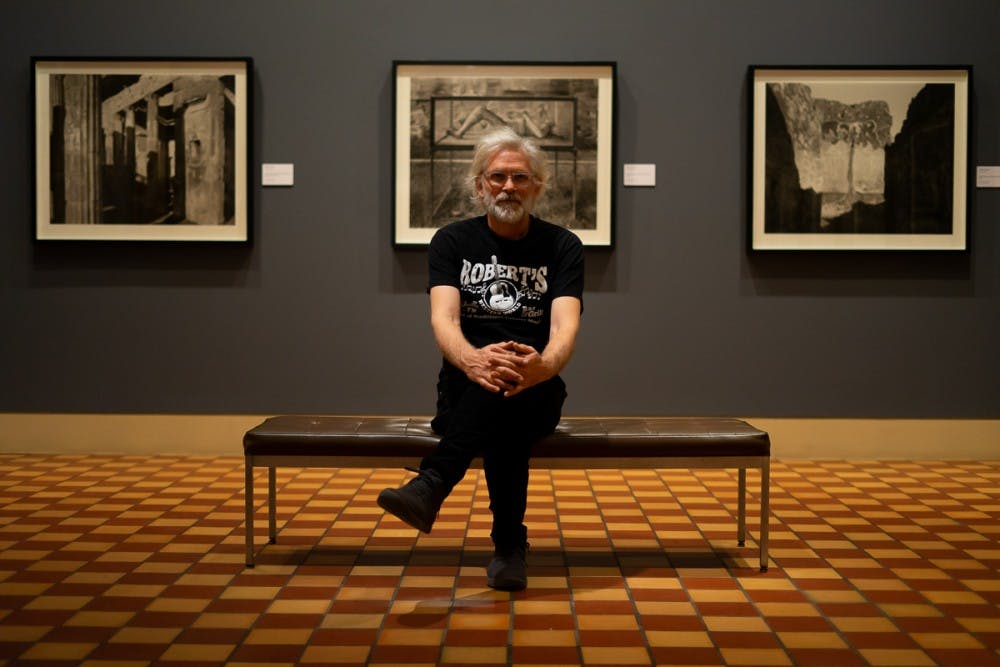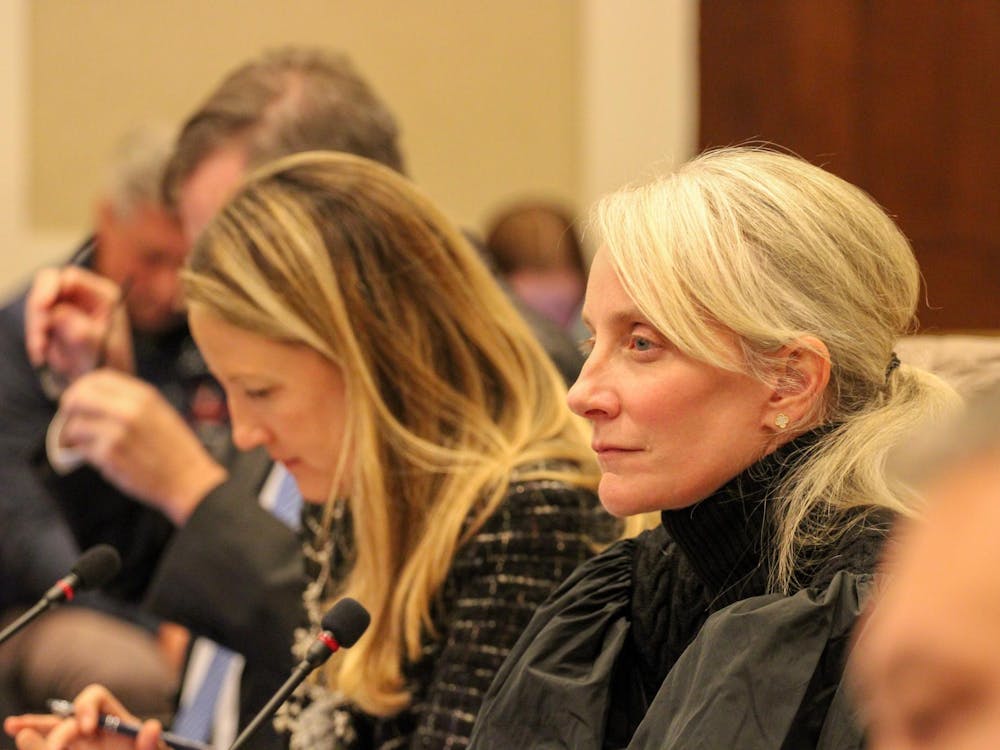“This is one of my favorite pictures,” Prof. William Wylie said as he addressed the robust crowd, which had gathered at the Fralin Museum of Art to hear him speak about his new exhibition. The image, entitled “Plaster relief, Gymnasium C, Stabian Baths (VIII.1.8)” was taken by Wylie in 2015, several years into his photography fellowship at Pompeii. Wylie took the photo while the sun shone onto the relief, creating highlights on the intricate wall. “I loved the way … it felt buried, sort of like Pompeii was buried,” he said.
Wylie’s “Pompeii Archive” exhibit — which features photographs from his five years spent exploring the archeological site, as well as works from Wylie’s original inspiration, German photographer Giorgio Sommer — only showcases a small selection of his work from the fellowship. While modest in size, the traveling exhibit still piqued the interest of many eager to hear about Wylie’s experience in Italy. Wylie remarked at the respectable size of his audience to begin the introduction to his work.
“It’s always been a dream of mine to kick [Ansel Adams’] butt,” Wylie said, referencing an exhibition of the American landscape photographer he helped curate in fall 2013. The special tour for Adams’ work may have been popular, but Wylie’s was personal. For much of his presentation, Wylie paired insightful artistic insight with casual commentary about flying to and from Italy — which involved negotiations with airport security to protect his art — and dealing with his Italian historical guide, a man named Savino.
“[Savino] wouldn’t let me take the picture. … I basically figured out how to ditch this guy,” Wylie explained, as he pointed to striking photographs on the wall. Wylie described his technical and artistic achievements with brief asides about how they were made possible. “I learned as a child how to get rid of people you don’t want to hang out with,” he said.
When asked by one visitor how he would plan his days in Pompeii, Wylie had a quick response. “I sort of didn’t,” he said. The photographer spent his time searching, observing and paying attention to the details of a prospective shot. “So much of photography is serendipity,” Wylie reminded the crowd, bringing their attention to another picture across the room.
“Sanctuary of Apollo (VII.7.32),” which Wylie captured in 2013, was the result of one such moment of serendipity. The photograph is similar to Sommer’s “#1281, Sanctuary of Apollo,” a print of which is also on display as part of the archive. The similarities are purposeful — Wylie began his fellowship with Yale by pitching the idea of recreating Sommer’s photographs — but the shadows in Wylie’s version elevate the new work and were the result of lucky timing.
At times, Wylie would spend 30 minutes or more composing and framing his shot, adjusting to fit corners, create or limit shadows or make small changes to the landscape. With minimal editing after the photo was taken — Wylie only photoshopped out the occasional bit of signage — the governing forces of his routine became compositional strategy and timing. “As an artist, I loved that process,” Wylie said.
Periodically, Wylie would address Prof. John Dobbins, a Roman art and archaeology specialist, who was in the crowd and had helped Wylie gain access to the Pompeii site. Dobbins provided insight about the process of creating plaster bodies from cavities discovered in volcanic material. Several of Wylie’s photographs feature the plaster forms, although the exhibit lacks any photographs of living visitors of the site.
The absence of people in Wylie’s photographs adds a fascinating layer to his work in Pompeii, which he explained became a mission to create something that felt “of my time, not Giorgio’s time or a classic time.” He described the continuous reconstruction of the landscape, various archeological projects and the challenge the site faces in preserving and presenting the plaster bodies which have attracted global tourists. The Pompeii of today is not what it was. It has changed with time — and Wylie wanted to capture that.
“A photograph fixes time and space in some way,” Wylie said near the end of the tour. “But photography also has a sense of time lost. As soon as you take a picture, it’s in the past.” The question of time lost hung over the gallery as members of the crowd began to mill around the room, paying extra attention to the details Wylie had mentioned on his tour.
Despite the relative absence of human bodies, the photographs reflect the shadows of life amongst columns and tiles. “That’s what I love about Pompeii,” Wylie said. “It’s so easy to pick up on the lives that were lived there.”
“Pompeii Archive: Photographs by William Wylie” is on display at the Fralin through April 21, 2019.







